Drought-Tolerant Perennial Flowers For Dry Gardens
These drought-tolerant perennial flowers can thrive in dry garden conditions and require less watering than other plants during dry spells. Resilient and resourceful, they can survive periods of drought and keep blooming through tough conditions.
Blanket Flower
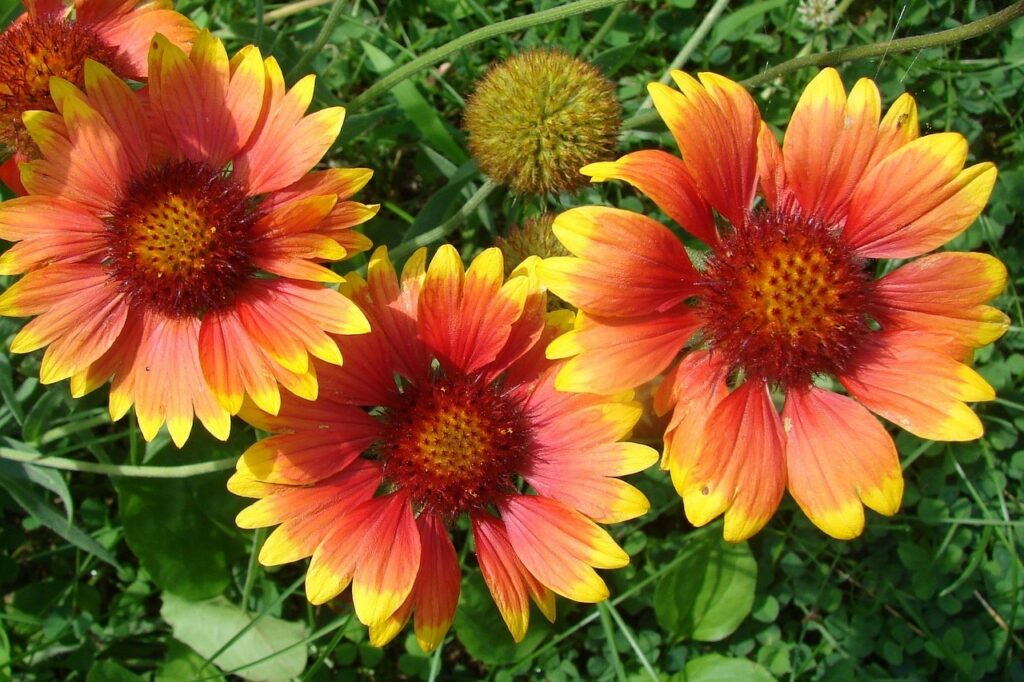
Zones: 3-10
Blanket flower, also known as Gaillardia, is a perennial plant that produces showy flowers that can be up to 4 inches in diameter. The color of the petals can range from yellow to orange to red or burgundy with bi-color combinations. They handle hot, dry conditions, making them ideal plants for sunny rock gardens or as border plants.
There are several types of Gaillardia that are best for drought-tolerance, including Gaillardia aristata, Gaillardia pulchella, and Gaillardia pinnatifida.
Drought-tolerant varieties of Blanket Flower
Arizona Apricot Blanket Flower
Barbican™ Yellow Red Ring Blanket Flower
Sunrita® Burgundy Blanket Flower
Sedum

Zones: 4-9
Sedum comes in many varieties, from low-growing ground covers to tall, upright plants. They are often grown as ornamental plants because of their unique foliage shapes and colors. Low varieties are lovely meandering through the rock garden. The flowers of Sedum plants are typically star-shaped and come in a wide range of colors, including pink, red, yellow, white, and purple. Rabbits and deer don’t find many of the sedum varieties to be favorable for lunch.
There are several types of Sedum that are particularly well-suited for drought-tolerance, including Sedum reflexum (also known as stonecrop), Sedum spurium (also known as dragon’s blood), and Sedum acre (also known as goldmoss). These plants vary in size, with some growing as low groundcovers and others reaching heights of up to 2 feet.
Drought-tolerant Sedum varieties
Dragon’s Blood Sedum
Autumn Fire Sedum
SunSparkler® Firecracker Sedum
Daylily

Zones: 3-9
The Daylily, also known as Hemerocallis, is a perennial plant that produces large, trumpet-shaped flowers that come in a variety of colors, including red, orange, yellow, pink, and white. Their ability to tolerate drought conditions makes them a popular plant for commercial plantings that don’t get much attention (such as highway median strips). Daylilies come in a variety of sizes and have a range of blooming times depending on the variety.
Some of the best Daylilies for drought-tolerance include the Stella de Oro, Happy Returns, and Pardon Me. These varieties are known for their hardiness and ability to tolerate dry conditions.
Drought-tolerant daylily varieties
RELATED: How to tell a daylily seed pod from a bud?
Black-Eyed Susan
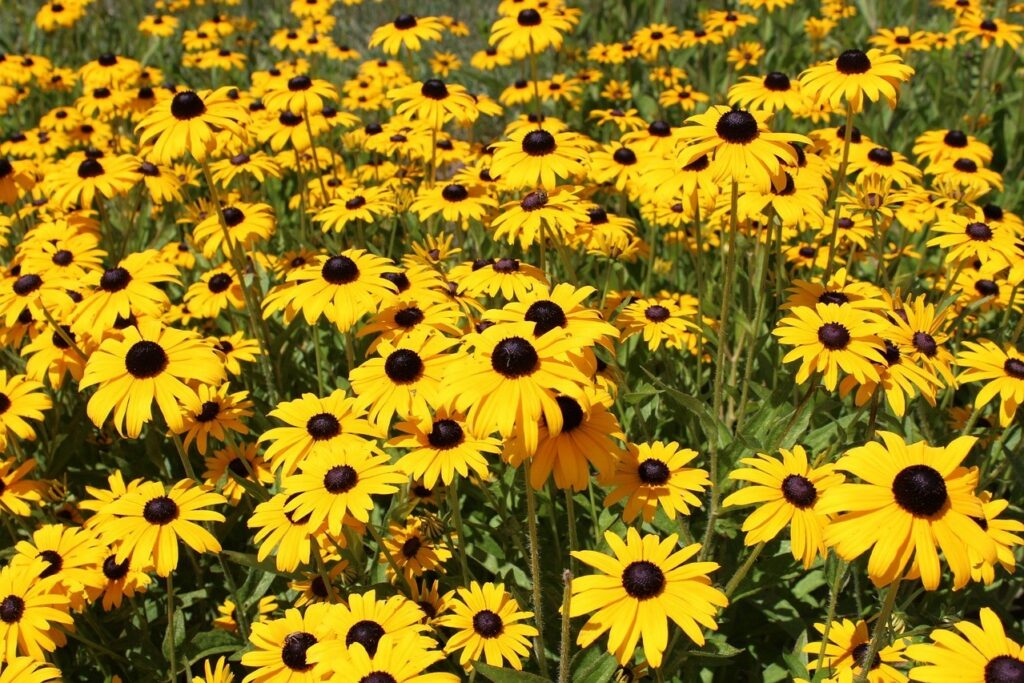
Zones: 3-9
Black-Eyed Susan (Rudbeckia) is known for its bright yellow or orange daisy-like flowers with a dark center. It blooms from mid-summer to fall and is a favorite of bees and butterflies. Plants typically grow 2-3 feet tall and 1-2 feet wide. Once established, the plant is easy to grow and maintain, and handles periods of drought like a champ. Deadhead frequently to keep blooms forming.
There are several varieties of Black Eyed Susan that are known for their drought-tolerance, including 'Goldsturm', 'Indian Summer', and 'Prairie Sun'.
Drought-tolerant varieties of Black-Eyed Susan
Indian Summer Black-Eyed Susan
Cherry Brandy Black-Eyed Susan
Little Goldstar Black-Eyed Susan
Lavender
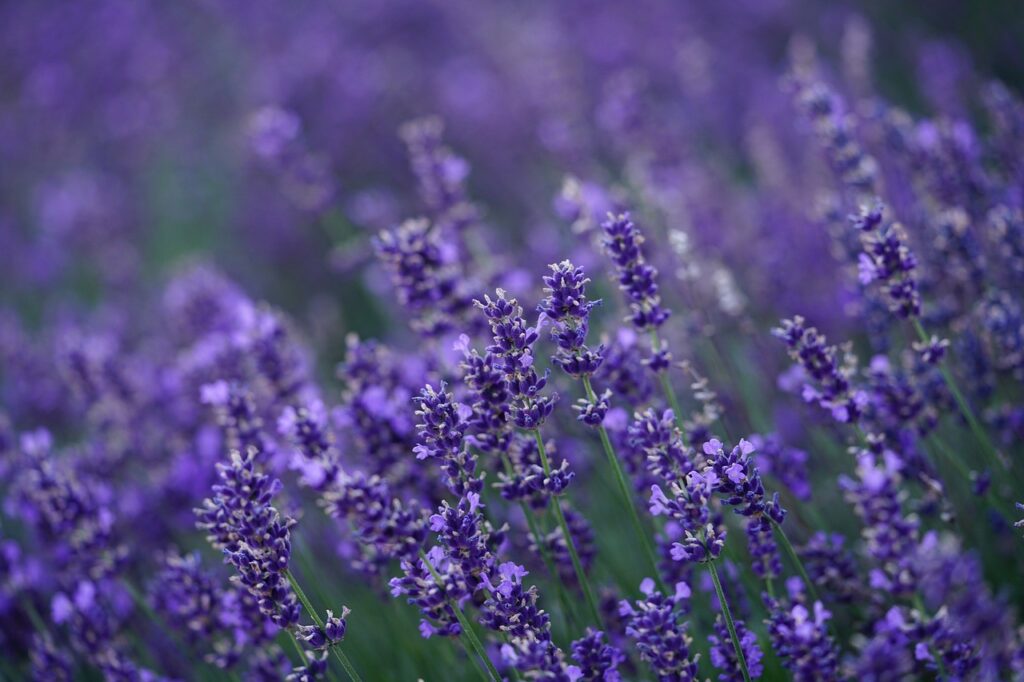
Zones: 5-9
Lavender is a perennial herb that is known for its fragrant flowers and foliage. It has narrow leaves that are gray-green in color and grow on woody stems. The flowers grow in spikes and are typically purple, although they can also be pink, white, or blue. Lavender plants can range in size from small shrubs to large bushes. Grow in full sun and prune in the spring to remove dead wood.
There are several types of lavender that are known for their drought-tolerance. These include English lavender (Lavandula angustifolia), Spanish lavender (Lavandula stoechas), and French lavender (Lavandula dentata).
Drought-tolerant varieties of Lavender
English Munstead Lavender
Phenomenal French Lavender
Otto Quast Spanish Lavender
RELATED: How to harvest and dry lavender
Echinacea

Zones: 4-9
Echinacea, also known as coneflower, is a perennial plant with large showy flowers. They come in a variety of colors, including pink, purple, white, and yellow. The flowers bloom mid-summer into fall, attracting beneficial pollinators all seasons. Watch for stiff spikes on flowers that have gone to seed.
There are several types of Echinacea that are particularly well-suited for drought-tolerance, including Echinacea purpurea, Echinacea pallida, and Echinacea angustifolia. These plants vary in size, with Echinacea purpurea growing up to 4 feet tall and Echinacea angustifolia reaching a maximum height of 2 feet.
Drought-tolerant varieties of Coneflowers
Purple Coneflower
Gray-Headed Coneflower
Pale Purple Coneflower
RELATED: Do Coneflowers come in different colors?
RELATED: How to harvest Coneflower (Echinacea) Seeds
Salvia
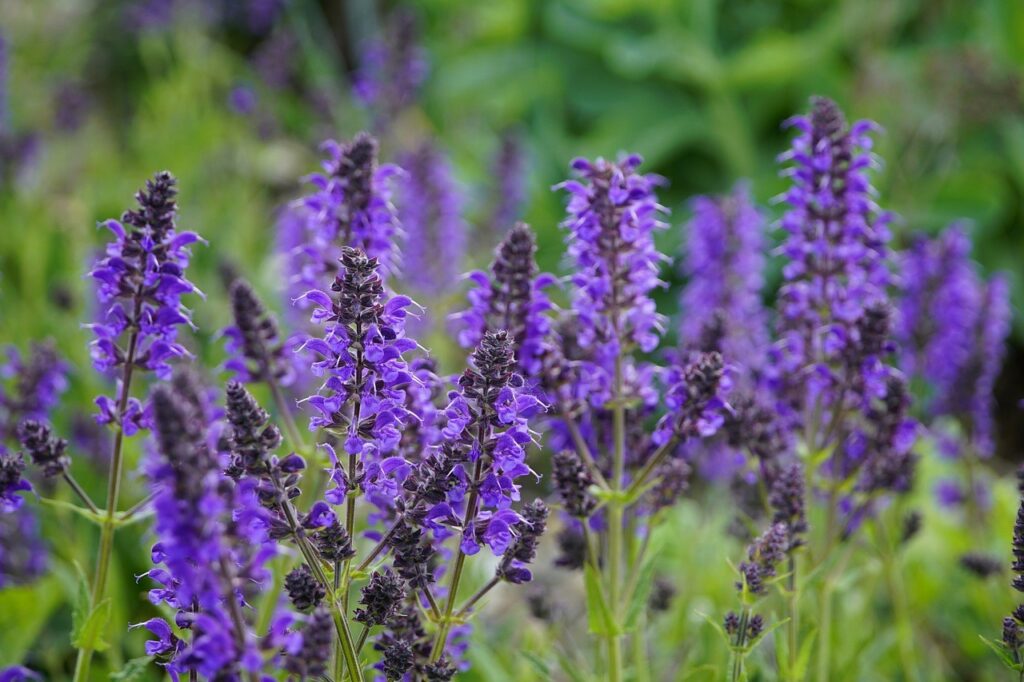
Zones: 4-9
Salvia are known for their upward-sweeping form with loads of thick flower spikes and often fragrant leaves. Salvia plants come in a variety of sizes, ranging from dwarf varieties that grow only a few inches tall to tall varieties that can reach up to six feet in height. The flowers of Salvia come in a range of colors, including blue, purple, pink, red, and white, and are attractive to pollinators such as bees and butterflies.
Some of the best types of Salvia for drought-tolerance include Salvia greggii, Salvia nemorosa, and Salvia officinalis. These plants are known for their ability to withstand periods of drought and require minimal watering once established.
Drought-tolerant varieties of Salvia
May Night Salvia
Furman's Red Salvia
Marcus Salvia
Yarrow
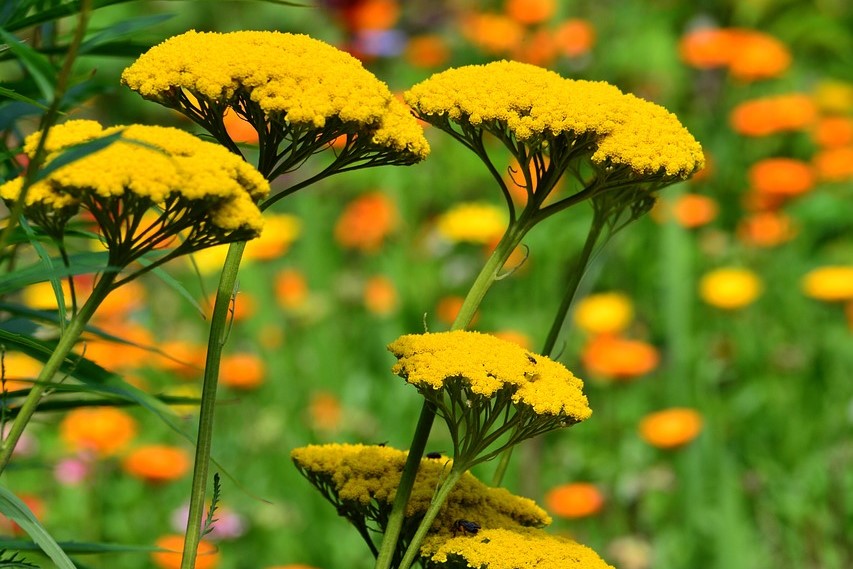
Zones: 3-9
Yarrow is a tough perennial that can tolerate a wide range of temperatures and growing conditions across the growing zones. It is known for its feathery, fern-like leaves and flat-topped clusters of small, daisy-like flowers that bloom in a range of colors, including white, yellow, pink, and red. Deadhead spent flowers to encourage blooming throughout the season. Large flower heads can cause the stem to bend and may require staking.
There are several types of yarrow that are particularly well-suited for drought-tolerance, including the common yarrow (Achillea millefolium), which is a compact plant that grows to a height of about 2 feet and produces clusters of white or pink flowers.
Drought-tolerant varieties of Yarrow
Strawberry Seduction™ Yarrow
Little Moonshine Yarrow
Paprika Yarrow
Russian Sage

Zones: 4-9
Russian Sage is a hardy perennial that is well-suited to dry climates. It typically grows to a height of 3-5 feet and has a spread of 2-4 feet. Its leaves are grayish-green and produces small, tubular flowers that are typically a pale blue or lavender color. Russian Sage pairs well with other drought-tolerant plants such as Echinacea.
There are several types of Russian Sage that are known for their drought-tolerance. Varieties can grow up to 5 feet tall with an upright habit. 'Little Spire' is a smaller variety that reaches a height of only 2-3 feet.
Drought-tolerant varieties of Russian Sage
Russian Sage
Little Spire Russian Sage
Blue Jean Baby Russian Sage
Coreopsis
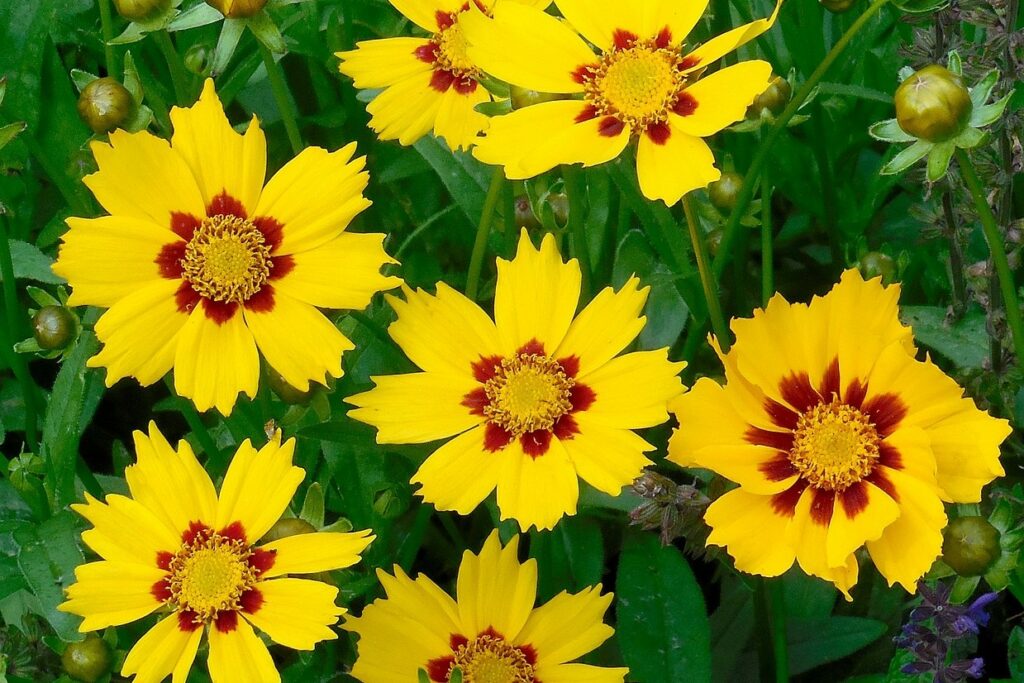
Zones: 3-9
Coreopsis is a hardy perennial that produces daisy-like flowers that come in a variety of colors, including yellow, pink, red, and orange, solid and bi-color varieties. The charming flowers have a central disk surrounded by petals that are often toothed or fringed. Often found on roadsides tolerating drought with ease, Coreopsis is well-suited to dry climates and low-water gardens.
When it comes to drought-tolerance, there are several types of Coreopsis that are particularly well-suited for dry conditions. These include Coreopsis verticillata, Coreopsis grandiflora, and Coreopsis lanceolata.
Drought-tolerant varieties of Coreopsis
Moonbeam Coreopsis
Li'L Bang™ Red Elf Coreopsis
Big Bang™ Cosmic Eye Coreopsis
Penstemon
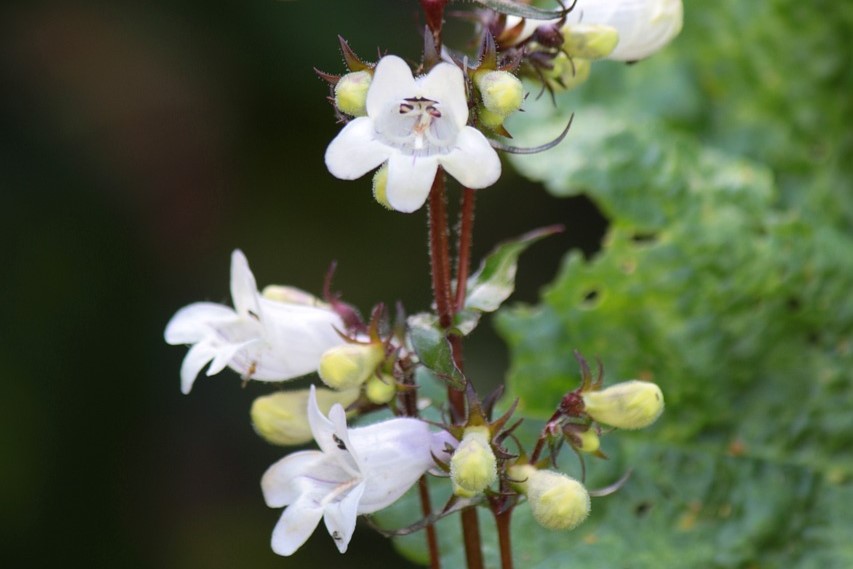
Zones: 3-10
Penstemon is a tough perennial that can handle hot, dry conditions across a wide growing range. Penstemon flowers are trumpet-shaped and come in a variety of colors, including pink, purple, blue, red, and white. Hummingbirds and bees love the deep throats of the Penstemon flowers that line each spire of the plant. Deadhead flowers to encourage blooming all summer.
There are several types of Penstemon that are best for drought-tolerance, including Penstemon digitalis and Penstemon barbatus. These plants can range in size from 1-3 feet tall and can be either clumping or spreading in form.
Drought-tolerant varieties of Penstemon
DAKOTA™ Burgundy Penstemon
MissionBells™ Deep Rose Penstemon
Blackbeard Penstemon
Once established, these drought-tolerant perennial flowers will perform year after year through tough summers. You will find them to be your go-to perennials for many locations in your garden.
Explore More

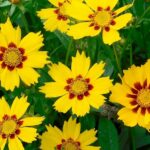



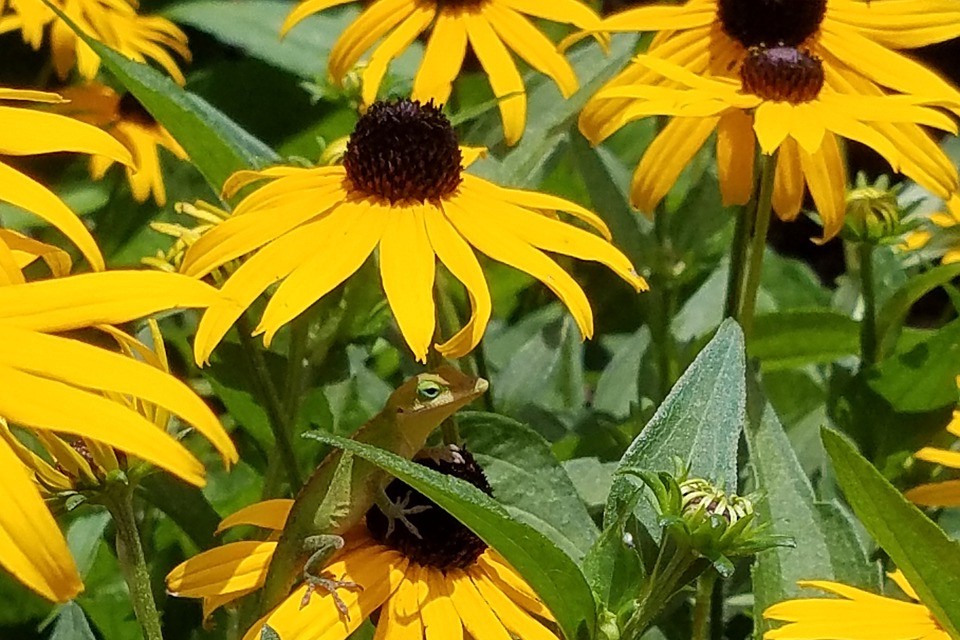
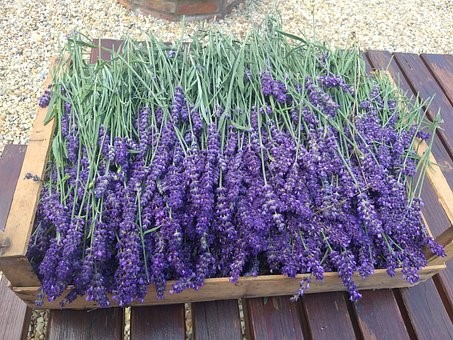
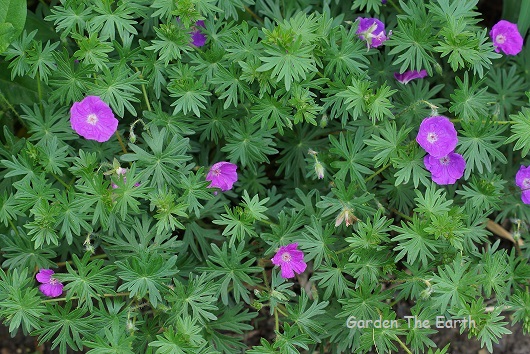
Comments
Drought-Tolerant Perennial Flowers For Dry Gardens — No Comments
HTML tags allowed in your comment: <a href="" title=""> <abbr title=""> <acronym title=""> <b> <blockquote cite=""> <cite> <code> <del datetime=""> <em> <i> <q cite=""> <s> <strike> <strong>